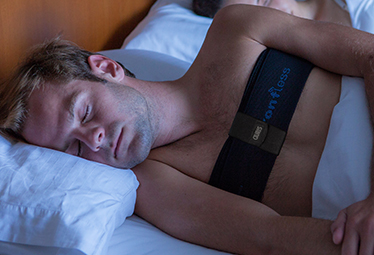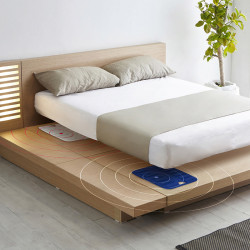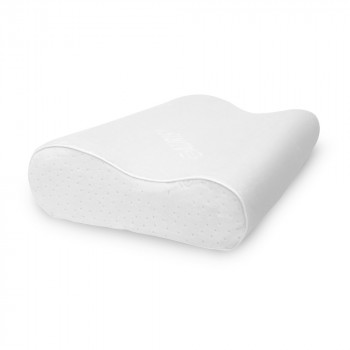 Sleep disorders affect a large number of people, with two particularly common and often linked phenomena: snoring and sleep apnoea. While snoring may seem benign, it can be an indicator of more serious health problems, such as sleep apnoea. Understanding their causes, symptoms and available solutions is essential to improving sleep quality and, by extension, quality of life.
Sleep disorders affect a large number of people, with two particularly common and often linked phenomena: snoring and sleep apnoea. While snoring may seem benign, it can be an indicator of more serious health problems, such as sleep apnoea. Understanding their causes, symptoms and available solutions is essential to improving sleep quality and, by extension, quality of life.
What is snoring and sleep apnoea?
Snoring occurs when the upper airway narrows, causing the tissues in the throat to vibrate as you breathe. Although common and often harmless, regular loud snoring can be a sign of sleep apnoea, a more serious condition where breathing is interrupted or becomes very shallow during sleep.
Sleep apnoea is a common sleep disorder characterised by temporary pauses or interruptions in breathing during sleep. These interruptions can last from a few seconds to several minutes and occur repeatedly throughout the night. The most common type is obstructive sleep apnoea, where the airways collapse or become blocked during sleep, preventing normal breathing.
People with sleep apnoea can often catch their breath with a loud snore or choking sound, disrupting their sleep. This disorder can lead to excessive daytime sleepiness, attention problems, and increase the risk of serious health problems such as heart disease and diabetes.
Causes and mechanism of obstructive sleep apnoea: the causes of obstruction can vary, but they often involve a relaxation of the muscles of the throat and tongue that support structures such as the soft palate and uvula. During sleep, these muscles can relax enough for the airways to collapse or close. Other factors such as obesity, reduced muscle tone, the anatomical structure of the airways and genetic factors may also play a role.
Symptoms of sleep apnoea :
- Frequent sleep interruptions
- Intense snoring
- Sudden awakening with a feeling of suffocation or gulping air
- Excessive daytime sleepiness
- Difficulty concentrating during the day
- Irritable mood or mood swings
- Morning headaches
Consequences for health
If left untreated, obstructive sleep apnoea can lead to a number of long-term health problems, such as cardiovascular disease, hypertension, type 2 diabetes, memory problems, and an increased risk of accidents in the car or at work due to drowsiness.
Why are they linked?
Snoring can be a prelude to sleep apnoea, particularly if the snoring is loud and followed by pauses in breathing. The partial or total obstruction that causes snoring can become severe enough to cause sleep apnoea, where breathing stops completely, forcing the person to wake up suddenly to resume breathing.
Causes and risk factors: both disorders share a number of common causes and risk factors:
- Overweight: excess weight can lead to excess tissue around the neck, narrowing the airways.
- Anatomy: a deviated nasal septum, enlarged tonsils or other anatomical features can restrict the passage of air.
- Consumption of alcohol and sedatives: these substances relax the throat muscles, exacerbating the narrowing of the airways.
- Age: muscle tone decreases with age, which can increase the risk of snoring and sleep apnoea.
Treatment and remedies :
- Lifestyle changes: losing weight, avoiding alcohol and sedatives before bedtime, and sleeping on your side can reduce the frequency of snoring.
- Appliances: oral appliances, positional devices such as RONFLESS* and continuous positive airway pressure (CPAP) devices may be recommended to keep the airway open during sleep.
- Surgery: in severe cases, surgery may be considered to remove or reduce excess soft palate tissue or to correct structural abnormalities.
- Medical consultation: it is vital to consult a sleep specialist to assess the severity of symptoms and recommend the appropriate treatment.
Snoring and sleep apnoea are not just nocturnal disturbances; they can be indicators of underlying health problems. Awareness and proactive action can greatly improve your health and well-being. Don't let these sleep disorders disrupt your life; consult a professional and explore the solutions available.
*What is the Ronfless belt?
The Ronfless belt is equipped with a positional device specially designed to encourage the sleeper not to sleep on his or her back, a posture that encourages snoring and can lead to obstructive sleep apnoea. By encouraging lateral sleep, the device helps to keep the airway open during the night, reducing snoring and improving breathing quality. The 20 mm magnet integrated into the solar plexus promotes relaxation and muscle release, helping to improve sleep quality.



